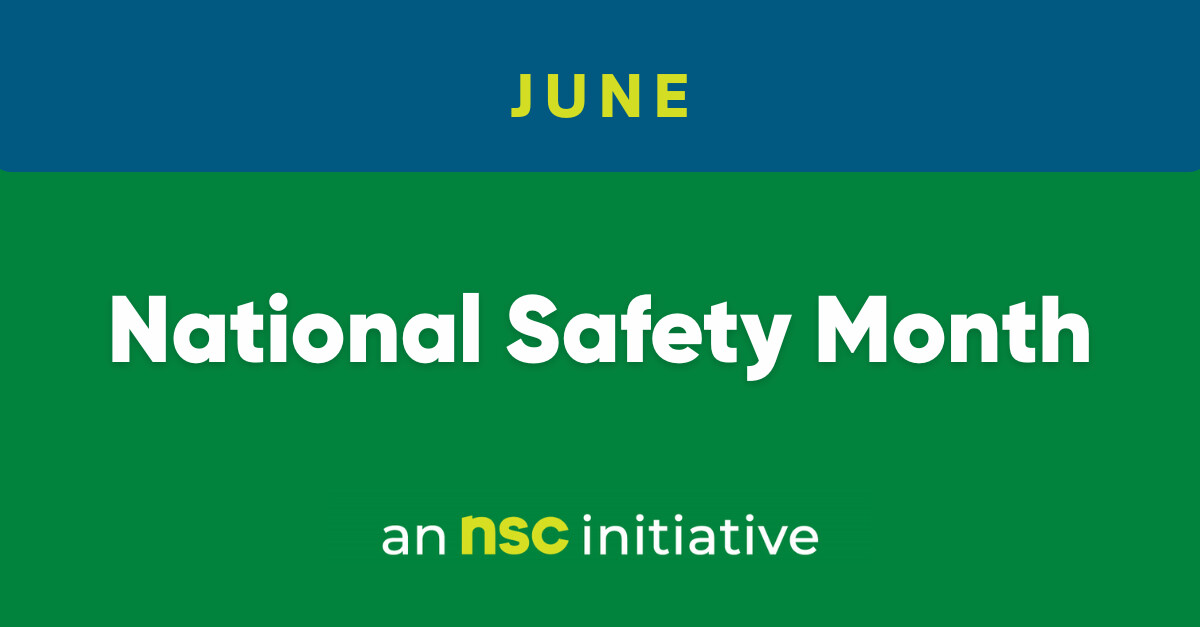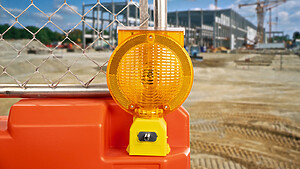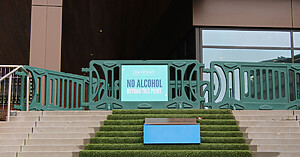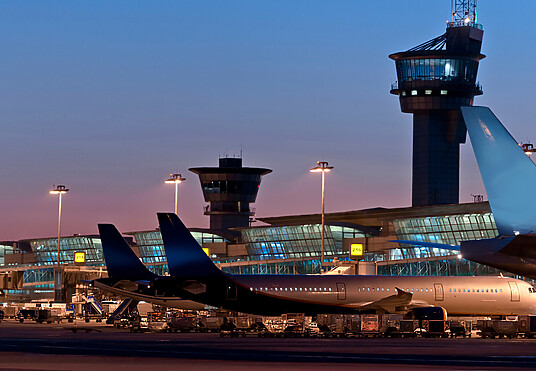June 2025 Safety Roundup

This blog series serves as a monthly highlight of recent news/updates in the safety industry, including airport, construction, events, and general safety news.
This month, we’ll highlight National Safety Month, the challenges currently facing the construction industry, why airports continue to focus on upgrades, how to keep event sponsors happy without sacrificing important elements, and more!
In OTW news, we’ll tell you all about our new e-commerce site (spoiler: we’re really excited about it), the details on our annual photo and video contest launching soon, and where you might have found us (or our barricades) recently!
Table of Contents
1 – June is National Safety Month
2 – Construction Backlog reaches peak levels since 2023 amid tariff concerns
3 – 5 Reasons Airports Are Prioritizing Upgrades in 2025
4 – 8 Ways to Help Your Construction Team Avoid Burnout
5 – Construction Struggles with Communication Despite Its Impact
6 – How to Keep Sponsors Happy—Without Sacrificing an Event’s Integrity
7 – OTW News and Featured Products
8 – Crowd Control FAQ
June is National Safety Month
What is National Safety Month (NSM)?
This month of awareness serves to highlight the need for increased safety, wherever you are. As the National Safety Council (NSC) puts it, it’s “the annual observance to help keep each other safe from the workplace to anyplace.” Their goal is to prevent the leading causes of death, especially in the workplace, and to bring increased attention to working together in prevention and advocating for safety
Specific topics are featured each week as a way to hone in on the ways that safety can be improved. This year, the topics are:
- Week 1 (June 1-7): Continuous Improvement
- Week 2 (June 8-14): Employee Engagement
- Week 3 (June 15-21): Roadway Safety
- Week 4 (June 22-30): Wellbeing
If you’d like to participate in National Safety Month, the NSC provides resources such as campaign posters, weekly videos and articles, and weekly 5-minute safety talks and quizzes to those who register. Registration is free!
To read more about National Safety Month and how OTW participates in it, find our blog article all about it here.
Construction Backlog reaches peak levels since 2023 amid tariff concerns
While contractors seemed quite uncertain of the impact of tariffs on their business, many companies have found that their backlog (the work they are contracted for in the future) is at its highest point in over two years.
For companies that bring in over $100 million in annual revenue, the number has increased significantly. For smaller contractors and small businesses, the numbers have risen moderately over the past year, but remain below the year-over-year mark, specifically for those who manage a $30 to $100 million revenue annually.
This brings a hopeful outlook for many contractors, as their workload remains intact despite the price increases inflicted by various tariffs.
5 Reasons Airports Are Prioritizing Upgrades in 2025
There are many reasons why an airport undergoes construction at any given point: emerging safety standards, the convenience and experience of passengers, and regular maintenance and upkeep among them.
But what are the top five reasons airports spend millions (or billions) of dollars in upgrades and infrastructure investments?
1. Condition and Capacity
While the pandemic contributed to decreasing air travel (with only 337.4 million passengers in 2020), the demand for it fully bounced back by 2023, with over 819 million passengers traveling by plane that year. If air travel continues to increase at its current rate, many airports across the country will face congested runways and terminals by 2028 and severe capacity restraints by 2033. The demand for air travel, then, requires that airports expand and modernize their terminals and airfields in order to accommodate the growing need.
2. Funding and Future Need
Most commercial airports come by their funding through four sources: airport-generated revenue; general obligation bonds; federal, state, and local grants, which include the Airport Improvement Program (AIP); and Passenger Facility Charges (PFCs).
This topic ties directly into the prior Condition and Capacity, and it’s clear that continued funding relies on the flow of traffic and the continued satisfactory experiences of travellers. Safety also comes into play, as updated check-in and baggage systems, air controller towers, and the proper use of airfield crew and hazard indicators (like low-profile barricades) all affect the continued operations of an airport. The needs of future travellers directly impact the current funding that many airports see, and, thus, require that continued investments in infrastructure are made.
3. Operation and Maintenance
Operations and maintenance cover a large portion of an airport’s upkeep.
In terms of operations, the aviation industry has been facing staffing shortages for a long time, specifically in finding air traffic controllers. Decreased staff impacts the efficiency of operations and often contributes to delays, employee fatigue, and increased safety incidents on active airfields. Airports are continually seeking to hire new air traffic controllers, and are upgrading ATC towers as well to include the newest technology to keep those in the air and on the ground safe.
For the airfield, the FAA requires that 93% of runways be in excellent, good, or fair condition. While in 2023, 97.7% of this quota was achieved, there were still some runways that could only be rated as poor. The runways themselves are still perfectly safe when rated as poor, but must be more diligently and frequently inspected and often require intensive maintenance. Airports continue to prioritize the upgrades of runways, among other things, so that they might meet the FAA rating requirement, which, in turn, will save airports, inspectors, and crews time and money on the regular maintenance of runways and taxiways.
4. Public Safety and Resilience
Incursions and near misses have increased over the past few years at airports around the country, which necessitated a response by the FAA. In 2023, they issued a Safety Call to Action to critically inspect and evaluate the US aerospace system’s structure, culture, processes, systems, and integrations of safety efforts. Various systems were recommended for implementation at an airport in response, as well as the implementation of the 2024 FAA Reauthorization Act to increase public safety and enhance the resilience of airports to weather- and human-caused catastrophic events.
5. Innovation
If US airports wish to enhance and improve the passenger experience, they must continually innovate and adapt to the latest technologies. Both the passenger experience and Operations and Management rely heavily on keeping up with current technological trends – these digital and physical systems support maintenance optimization and asset reliability, and they can be put in place with an expected return-on-investment as the demand for safe air travel and the expectation for smooth experiences at the airport continues to exist.

8 Ways to Help Your Construction Team Avoid Burnout
Projects with long timelines can be draining for a crew at any location (residential, commercial, airport, etc.), which can impact productivity, worker morale, and more. In the long run, this can lead to burnout, which is characterized by exhaustion, a decreased connection to the job, and inefficiency.
To combat this, here are eight ways to help your construction teams avoid burnout:
- Lead by example
- Perform regular safety reviews
- Recognize team performance
- Create incentive by offering bonuses
- Get together outside of work (if possible)
- Provide opportunities for growth
- Be understanding and flexible
- Make your team feel heard
And here are three more we think really contribute to happy and healthy workers:
Schedule shifts in a way that avoids a fatigued crew, allow for long enough breaks during each shift, and provide mental health resources for those who need them.
Construction Struggles with Communication Despite Its Impact
You often hear the phrase “time is money”, and it can absolutely be said for those in the construction industry.
Slack and Construction Dive surveyed 150+ top-level construction IT and operations executives to discover how companies’ collaboration and communication practices challenge, benefit, and impact their operations. The overall consensus was that the industry faces a plethora of problems with communication and collaboration. Many are exploring automation to increase productivity, enhance customer satisfaction, facilitate better real-time collaboration, and improve risk and safety management.
But much distance remains before that will be a reality for many companies. There are many opportunities for the goals that the surveyed companies have, but “before you can improve external communication with partners and clients, you must improve internal communication,” says Jim Smith, the regional VP of Salesforce.
The construction industry has made strides to improve its communication and collaboration over the years, and things can only improve as new technology advances. In the meantime, contractors around the country can take small steps every day towards better communication, safer sites, and a better experience for all.
How to Keep Sponsors Happy—Without Sacrificing an Event’s Integrity
Juggling timelines, equipment, artists, speakers – and the ones who help turn the event from an idea into a reality: the sponsors – isn’t an easy job. So, how can an event planner ensure that every facet runs smoothly and they keep their sponsors happy?
Here are eight tips from some of the best in the business on how to ensure your sponsors are satisfied without sacrificing an event’s quality and integrity:
- Be upfront about your event’s vision and boundaries
- “It’s all about finding common ground”
- Prioritize authenticity
- Focus on moments that enhance the experience, rather than just displaying logos
- Use functional touchpoints for subtle branding moments
- Maintain balance in content sessions
- Be collaborative when ideas don’t fit
- Focus on building long-term sponsor relationships
When it comes down to it, it’s all about working together to create something incredible.
Our take? Use these eight great tips and then add in our aesthetically pleasing Billboard Barricades – with their thoughtfully designed custom signage inlay – in order to really highlight your sponsors and give them the spotlight they deserve.
Speaking of OTW… here’s the latest from us!
OTW News
The annual OTW Photo and Video Contest is launching soon
Each year, we ask our customers to submit their best photos of OTW barricades in action for the chance at winning… $1000 (and a feature in our blog)!
From mid-July through the end of August, we’ll take all submissions and our team will vote on their favorites until we find the number one pick. See last year’s winner here.
Keep an eye out for the official start date!
Local to Salt Lake City? Make your next event a safety success with OTW barricades!
Some of our favorite local events use OTW Billboard Barricades to make their events really shine. With thoughtfully designed custom signage inlays, the Billboard Barricade is the perfect blend of security and aesthetics to help guide guests, section off a doggy racetrack, or separate spectators from a fun parade.
Our team utilized OTW Barricade at our outdoor event venue for a number of things. Traffic safety, lines at the main gate, lines at activations inside, creating VIP seating sections, etc. The barricade is light weight and customizable with signage so we could adjust easily depending on each show’s individual layout needs. Definately think it helped flow in our space while looking clean and sharp.
Courtney Mortensen [Event: Granary Live]
A few of our recent rental customers include:
- Hibernian Society’s St. Patty’s Day Parade
- Millcreek Common’s Doxie Derby
- The Kentucky Derby Three-Day event
If you’re located in Utah, we’ve got you covered when it comes to renting safety barricades. Give our experts a call or fill out a quote form here to get started.
Our e-commerce site is live!
At OTW, we’ve been working hard to prepare for the busy summer season, and we’re happy to say that we’ve brought our new e-commerce site to life just in time for the hustle. While there is always a real person available to talk to about your personal safety needs and how we can help fulfill them, we wanted to create a way to facilitate quick and easy ordering for our customers.
Intended for small-quantity orders, our new system can accurately quote freight costs and place your order right into our fulfillment queue. We’ve been working on this for months, and we hope it enhances the OTW experience! We’ve started with our key products (like the Billboard Barricade, our LCD jersey barricades, and our low and mid-profile airport barricades), but will be rolling out additional products and accessories throughout the coming year. For larger quantities and discounts on bulk products, we’re only a phone call (or email) away!
Speaking of our e-commerce site…
Our original Airport Runway Hazard Light (ARL) has been added, but they won’t last long! The ARL was engineered for quick deployment, low maintenance, and high visibility on any runway, especially when paired with our barricades (AR10x96, AR 24×96, AR3 Low Profile Delineator, and 32” Compact LCD). We love our original airport hazard light, but it’s time for another to shine, so the AHL will be retired once our inventory hits zero.
Supplies are limited, so get your small-quantity orders in before they’re gone for good!

CROWD CONTROL FAQ
- What is crowd control, and why is it important?
Crowd control involves managing large groups of people to prevent overcrowding and ensure everyone’s safety, helping avoid accidents and chaos. - How can event organizers prevent overcrowding?
By limiting ticket sales to venue capacity, using barriers, designating clear entry and exit points, and employing trained staff to monitor crowd flow. - How do plastic barricades assist in crowd control?
Plastic barricades are lightweight, durable, and easy to set up, helping create clear boundaries, guide foot traffic, and prevent unauthorized access, which improves crowd flow and safety. - What should be done to ensure emergency exits are safe and accessible?
Emergency exits must be clearly marked, unobstructed, sufficient for the crowd size, and staff should be trained to guide people calmly during an evacuation. - How does communication impact crowd safety?
Clear communication via PA systems, signage, and staff instructions keeps attendees informed and helps manage crowds effectively, especially during emergencies.
OTW is here for the long haul
Whether participating in National Safety Month to advocate for safety and bring awareness, providing barricades to keep crew and passerbys safe at construction sites, or partnering with event planners and organizers to build the best event yet, OTW Safety is dedicated to building safer spaces one day at a time, for a long time.
Need assistance with barricades or safety products? Get in touch with our expert team today!


